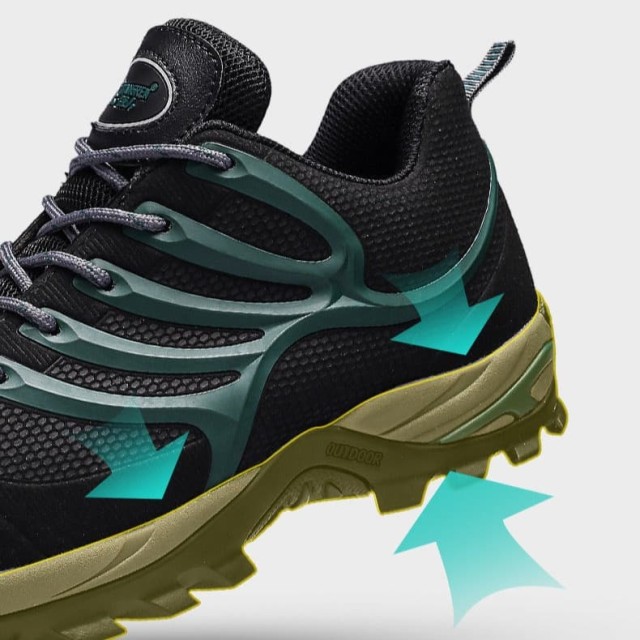Modern workplaces demand footwear that doesn’t just protect—it performs. Steel toe boots have evolved beyond their traditional role as rigid safety gear, now integrating ergonomic engineering and advanced technologies to prevent injuries while enhancing all-day comfort. This article explores the innovations bridging these critical needs.
Steel Toe Boots: Bridging Safety and Ergonomics for Modern Workforces
Gone are the days of sacrificing comfort for protection. Today’s steel toe boots are engineered to address two priorities:
- Injury Prevention: Meeting stringent safety standards (like ASTM F2413) for impact, compression, and puncture resistance.
- Ergonomic Support: Reducing foot fatigue through materials and design tailored for long shifts.
Research shows that ergonomic footwear can decrease workplace injuries by over 20% while improving productivity. For industries like construction, manufacturing, and logistics, this dual focus is transformative.
Anatomy of Comfort: Materials and Design Behind All-Day Wearability
Key Innovations:
- Lightweight Composite Toes: Up to 30% lighter than traditional steel, composite materials (e.g., carbon fiber or Kevlar) meet the same ASTM safety standards while reducing leg strain. They also insulate against extreme temperatures.
- Contoured Footbeds: Arch support and heel cushioning distribute weight evenly, minimizing pressure points. Some designs incorporate memory foam that adapts to the wearer’s foot shape.
- Breathable Linings: Moisture-wicking fabrics prevent blisters and overheating, critical for workers in humid or high-temperature environments.
Pro Tip: Pair ergonomic boots with preventive habits like hourly stretches and post-shift ice soaks to further reduce swelling.
Beyond the Steel Cap: Multi-Layered Safety Technologies
Modern boots integrate additional protections without compromising mobility:
- Puncture-Resistant Midsoles: Thin but tough plates shield against nails or sharp debris.
- Electrical Hazard (EH) Ratings: Non-conductive materials protect against live circuits, vital for electricians.
- Slip-Resistant Outsoles: Advanced tread patterns maintain grip on oily or wet surfaces.
Did You Know? Composite toes are safer for electrical work since they don’t conduct electricity, though steel toes offer greater impact resistance.
Real-World Impact: Data-Driven Results Across Industries
- Construction Workers: A 2023 study found that crews wearing ergonomic safety boots reported 15% fewer fatigue-related errors.
- Warehouse Staff: Lightweight designs reduced reported foot pain by 40% during 10-hour shifts.
- Cold Storage Facilities: Composite toes prevented frostbite risks common with metal caps.
These outcomes underscore how thoughtful design translates to tangible benefits.
Step Into the Future of Safety Footwear
The synergy of ergonomics and protection isn’t just a trend—it’s a workplace revolution. For distributors and bulk buyers, 3515’s advanced footwear line merges cutting-edge safety with unparalleled comfort, ensuring your teams stay protected and productive.
Ready to equip your workforce with boots that work as hard as they do? [Contact 3515] to explore our OEM and bulk solutions tailored to your industry’s needs.
Products You Might Be Looking For:
Explore ergonomic steel toe work shoes
View customizable safety footwear options
Discover durable steel toe work boots
Browse lightweight composite toe boots
Related Products
- Wholesale Mesh Steel Toe Safety Shoes with Dial Closure Factory Production
- Wholesale Customizable Safety Boots Durable & Protective Footwear Manufacturing
- Athletic Safety Shoes with Dial Closure & Steel Toe for Wholesale & Custom Manufacturing
- Durable Leather Safety Boots for Wholesale & Custom OEM Manufacturing
- Wholesale Customizable Suede Safety Boots - Puncture-Proof with Velcro Closure
Related Articles
- How to Choose Between Steel and Composite Toe Boots for Maximum Safety
- How to Choose Safety Footwear That Solves Steel Toe Shoe Problems Without Sacrificing Protection
- How Steel Toe Shoes Meet Safety Standards and Prevent Workplace Injuries
- How to Prevent Foot Injuries from Steel Toe Boots Without Sacrificing Safety
- How Steel Toe Shoes Prevent Injuries: The Science Behind Workplace Safety



















